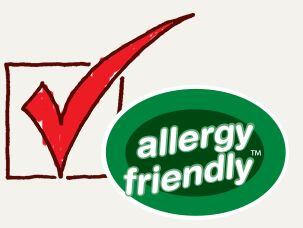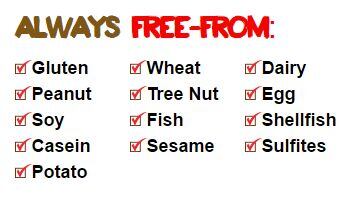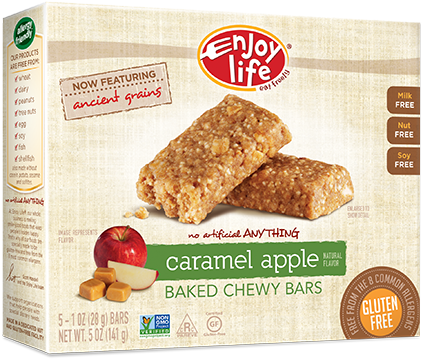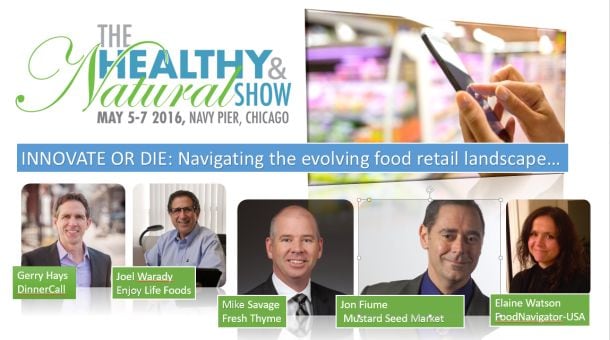Speaking at a webinar on the ‘free-from’ category organized by New Hope Network on April 28, Joel Warady, chief sales & marketing officer at Enjoy Life Foods, said: “The US gluten-free market is still growing in excess of 25% year on year. Has it slowed down? Absolutely, it was growing at 40% a year, but it’s real, and it’s not going away.
“But we’ve always been more than just gluten free at Enjoy Life. And one of the reasons comes down to this fact: Back in 1990, only one out of 50 children had been diagnosed with a food allergy. Today it’s one out of 13 and there are people that believe that within the next two years it’s going to be one out of 10 [click HERE].”
What does ‘free-from’ mean?
As for what ‘free-from’ means, the definition has become a little nebulous, he said, with some people defining it as free from the ‘big 8’ allergens requiring labeling by the FDA, and others associating it more loosely with ‘clean-label’.
He added: “The definition has become a bit diluted. We look at it in its pure sense as being certified gluten-free, as well as being free from the top eight allergens [wheat, dairy, peanuts, tree nuts, egg, soy, fish and shellfish]. We are also are free from Canada’s 12 priority food allergens, which include the top eight plus sulfites, crustaceans, sesame and mustard. Plus we’re free of celery and lupin [which are on the EU official list].”
We don’t use the term ‘allergen-free’

But Enjoy Life Foods does not use the term ‘allergen-free’ he said: “The reality is, someone is always allergic to something… so you can’t be allergen-free.”
While there is no legal definition of this term, Enjoy Life Foods instead uses the phrase, ‘allergy-friendly’ as it does not use the top allergens identified by regulators, he said: “The top 8 allergens represent 90% of all food allergies in the US today.”
Free-from: An $8bn market in the US?
So what’s the size of the free-from prize?
It depends how you define it, he said, noting that some definitions of gluten-free in particular are unhelpfully broad and over-value the market by including anything with a gluten-free label (including products that might be naturally-gluten-free).
“We look at the category as being about $8bn, so that includes gluten-free, dairy-free, soy-free – all the milk alternatives are in there, for example, and it’s continuing to grow in the double digits year-on-year.”
As for the gluten-free market specifically, he said, “When we are looking at the market in America today, the fact is that there are only about three million people with celiac disease. They have to eat gluten-free, they don’t have a choice, but it’s only three million.

“There are another 22 million people that buy gluten-free for other reasons. Then you’ve got another 75 million people that shop for free-from foods of some kind whether they have allergies or intolerances or because they just choose to avoid certain allergens, so we look at the free-from market as being 100 million people.”
Who buys free-from foods?
Heavy buyers of free-from foods are in households with children, with a median age of 39.2, and are heavy internet users, he said.
They are also valuable to retailers, because they spend more: “Free from shoppers are in the top 15% in terms of spending; the free-from consumer will spend $102 on an average visit at a retail store versus an average shopper at $46.
“That’s not because they are spending $102 on free-from products… it’s because they are more likely to buy more organic products, more kosher products, more high-end products, more artisan products. They are so much more careful about what they are putting into their body, so they spend more, so we encourage retailers to have a larger free-from variety to keep that consumer in the store so they are not having to go to a specialty store to find their products.

“And the loyalty index is two to one. They will come back to your store if you have the right products for them.”
Where should retailers put free-from foods?
Asked whether retailers should merchandise free-from foods in a dedicated section, or throughout the store, he said: “We get asked this all the time, should I integrate the products? And the answer is not yet, although the time is coming [when the answer might change], probably in the next three to five years.
“But for now, if you do integrate them, make sure the shelf signage is really apparent so it’s easy for people [to find the products they are looking for].”

Joel Warady will be speaking on a panel at the Healthy & Natural Show in Chicago on Thursday May 5. The session, entitled, Innovate or Die: Navigating the evolving food retail landscape, also features Mike Savage from Fresh Thyme Farmers Market, Gerry Hays from DinnerCall, and Jon Fiume from Mustard Seed Market.
Click HERE for full details on the education program, which features a keynote from Dr Joseph Mercola.
